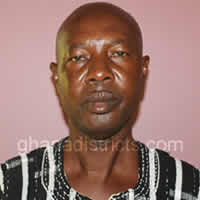

Introduction
The size, age and the sex distribution of a population are some of the fundamental features for understanding the social and economic dynamics of fertility, mortality and migration. The variation overtime in these characteristics gives an insight into the changing phenomenon and highlights the economic challenges in the future. This chapter covers the age and sex composition of the Builsa South District.
Population Size and Distribution
According to the 2010 Population and Housing Census, the Builsa South District has a total population of 36,514. The males constitute 49.6 percent while females constitute 50.4 percent of the entire population of the district.
Table 2.1 presents the population size and distribution in the district. From the table 40.6 percent of the population are those below 15 years and older. The age group 15-19 represents 11.2 percent of the district population with males constituting 5.8 percent and females 5.5 percent.
Age-Sex Structure
Figure 2.1 depicts the age-sex structure of the population in Builsa South District. This age structure is the results of past fertility, mortality and migration in the district. It is in the form 18
of a district pyramid, with broad base and a narrow apex. With increasing age, the age-sex structure looks slightly thinner for the males than for the females, indicating that at older ages, the proportion of the males is smaller than that of the females. The age groups 0-4, and 5-9 years have the highest of 14.2 percent each, followed by the 10-19 group with population 23.4 percent. The age group 60-64 years recorded a small percentage of 2.7. Generally, there are more females in the various age groups than males (figure 2.1).
Age
Female
Male
Sex Ratio
The sex ratio in most populations favours males at birth. The average sex ratio at birth in most populations is about 105 to 106, (GSS, 2000). The sex ratio decreases with age as a result of differences in death rates at all ages which favour the males. The sex ratio is also influenced by migration patterns. It measures the number of males per 100 females in the population, the balance of the sexes being 100. From Table 2.2 the district has a sex ratio of 98.3 which implies that for every 100 female there are 98 males. The table further shows that the age group 0-14 has the highest sex ratio of 109.6 in the district followed by 15-64 having sex ratio of 91.6.
Age Dependency Ratio by Locality
This is defined as the population aged less than 15 years and 65 years and older divided by the population in the 15-64 age group multiplied by 100. Dependency ratio is one of the key indicators of socio-economic development. It relates the number of children (0-14 years old) and older persons (65 years or over) to the working-age population (15-64 years old). It shows the potential effects of changes in age structure for social and economic development, 19
pointing out the level of social support needs. The district has a dependency ratio of 88.6, which means that for every 100 persons in the labour force there are 88.6 dependents to be taken care of. Male age dependency ratio of 95.6 is greater than the female ratio of 82.2. This means there are more male dependents in the district than females.
Fertility, Mortality and Migration
Fertility, mortality and migration are the three dynamics of population change that determine the size, age and sex composition and distribution of the population at a particular point in time. Data on these three components are critical for planning the overall socio-economic development of the district. This section provides analysis of the fertility, mortality and migration patterns in the district.
Fertility
Table 2.3 shows reported total fertility rate, general fertility rate and crude birth rate by district in Upper East Region. The total fertility rate is the average number of children that would be born to a woman by the time she ended child bearing if she were to pass through all her child bearing years conforming to the age-specific fertility rates of a given year. The general fertility rate is calculated by dividing the total number of births in a given year by the number of women aged 15 to 49 and multiplying by 1,000. Crude birth rate is the number of births per 1,000 persons in a population over a given period of time (i.e. 1 year). It is a ratio of the number of births to the total population.
The total fertility rate for the region is 3.4 with a general fertility 97.5 and crude birth rate of 22.7. The total fertility rate for the district is 4.3 children per woman, which is higher than 3.4 of the region, indicating that the district population is growing faster as compared with the region. The district has a crude birth rate of 27.7, which implies that there are 27.7 live births for every 1000 population in the district.
Children ever born and surviving
Table: 2.4 present female aged 12 years and older by sex of children ever born and children surviving. The total number of females for all the age categories is 12,553. Children ever born are 37,860 while children surviving are 29,872. Generally, the number of male’s surviving outweighs that of the females. The proportion of surviving female children is slightly higher (50.1 %) than that of the male children (49.9%). However, the proportion of children ever born is higher among the males (50.3%) than the females (49.7%).
Mortality
Data on mortality provide an indication of the health status of the population as well as a measure of the living standard of the people. It also provides information on the potential growth of the population in the future. Table 2.5 shows the total population, deaths in households and crude death rate by district and the region. The computed crude death rate for Builsa South District is 9.2 deaths per 1,000 populations in the year proceeding the census night. This is quite lower than the regional value of 10.8 deaths per 1,000 populations.
Causes of death
Table 2.6 shows the number of deaths recorded in households as well as the causes of the deaths at three levels; national, regional and district. The causes of death are categorised into two namely: deaths due to accident/violence/homicide/suicide and all other causes on one hand and Of the total number of 337 deaths in the Builsa South District, Accident/ violence/ homicide /suicide accounted for 4.2 percent compared with 15.2 percent in the region while all other causes constitute 95.8 percent
Age specific mortality rate
Figure 2:2 shows mortality population by age group and sex in the Builsa South District. It portrays mortality trends in the district of ages 0-4 to 70+ years. There is a rise in mortality among females at age 5-9 and 25-39 years than males. At age group 45-49 there is a sharp increase in mortality between males and females, with mortality rates for males been higher than that of their female counterparts. Generally, there is rise in mortality from birth to the older ages. See figure 2.2
Migration
Table 2.7: presents information of birth place by duration of residence of migrants in the Builsa South District. The places of birth and enumeration in a census are important for understanding the internal movements of the population in any given territories. The total migrant’s populations in the district is 4,116 and 59.4 of percent were born elsewhere in the region.
About one-third (31.2%) of persons born elsewhere in another region were born in the Ashanti region which is the highest followed by Northern Region, (23.0%). One in every five (21.7 %) born in the Ashanti Region stayed for less than one year in the region. The highest number of those born in the Ashanti Region could be as a result of parents engaging themselves for economic activities with their family members.
Date Created : 11/20/2017 4:18:04 AM










 facebook
facebook
 twitter
twitter
 Youtube
Youtube
 +233 593 831 280
+233 593 831 280 0800 430 430
0800 430 430 GPS: GE-231-4383
GPS: GE-231-4383 info@ghanadistricts.com
info@ghanadistricts.com Box GP1044, Accra, Ghana
Box GP1044, Accra, Ghana